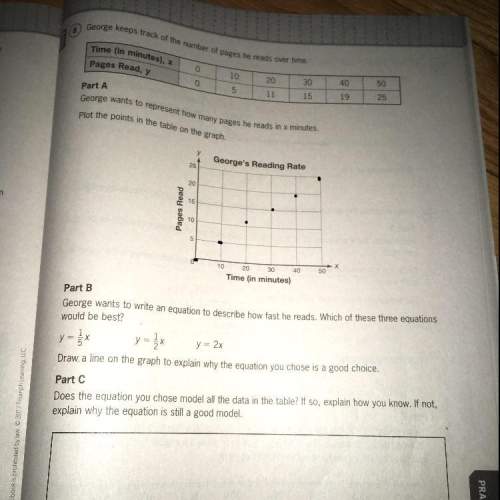
Mathematics, 18.10.2019 14:10, Cupcake8189
Consider the following function. f(x) = 16 − x2/3 find f(−64) and f(64). f(−64) = f(64) = find all values c in (−64, 64) such that f '(c) = 0. (enter your answers as a comma-separated list. if an answer does not exist, enter dne.) c = based off of this information, what conclusions can be made about rolle's theorem? this contradicts rolle's theorem, since f is differentiable, f(−64) = f(64), and f '(c) = 0 exists, but c is not in (−64, 64). this does not contradict rolle's theorem, since f '(0) = 0, and 0 is in the interval (−64, 64). this contradicts rolle's theorem, since f(−64) = f(64), there should exist a number c in (−64, 64) such that f '(c) = 0. this does not contradict rolle's theorem, since f '(0) does not exist, and so f is not differentiable on (−64, 64). nothing can be concluded.

Answers: 2
Other questions on the subject: Mathematics

Mathematics, 21.06.2019 18:30, monyeemonyee12
Find the area of a parallelogram with base 15 yards and height 21 2/3
Answers: 1

Mathematics, 21.06.2019 23:30, lanlostreyn
Peyton's field hockey team wins 4 games out of every 7 games played. her team lost 9 games. how many games did peyton's team play?
Answers: 2

Mathematics, 22.06.2019 02:00, Peachyyyyyy24
Aiko jumped rope for 20 min and stopped at 8: 05 when did she start
Answers: 1

Mathematics, 22.06.2019 02:40, jessicad1198
21 type the correct answer in each box. if necessary, round your answers to the nearest hundredth the vertices of abc are a(2,8), b(16, 2), and c(6,2). the perimeter of abc is units, and its area is square units
Answers: 2
Do you know the correct answer?
Consider the following function. f(x) = 16 − x2/3 find f(−64) and f(64). f(−64) = f(64) = find all v...
Questions in other subjects:


Mathematics, 14.08.2019 08:30






English, 14.08.2019 08:30




 , we substitute
, we substitute  into the function.
into the function.


 , we substitute
, we substitute  into the function.
into the function.


 , we must first find
, we must first find  .
.





![[-64,64]](/tpl/images/0331/4759/9d021.png) .
. .
. .
.












